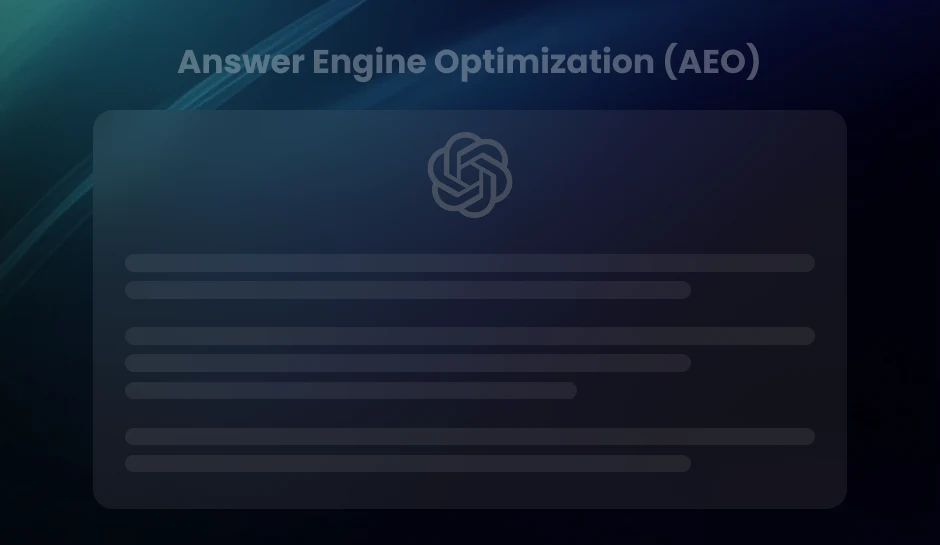
Account-Based Marketing for SaaS: Precision Targeting for Scalable Growth
Account-Based Marketing (ABM) is transforming SaaS growth strategies. Learn how personalized outreach, ideal customer profiles, and intent data can help your team close more high-value accounts faster and more efficiently.
Account-Based Marketing (ABM) in the SaaS landscape refers to a highly focused growth strategy where marketing and sales teams collaborate to create personalized buying experiences for a carefully selected set of high-value accounts. Instead of casting a wide net, ABM zeroes in on key business accounts and treats each as a market of one.
In the B2B SaaS environment, where long sales cycles, multiple decision-makers, and complex solutions are the norm, ABM delivers where generic campaigns fall short. It drives higher ROI, shortens deal cycles, and strengthens client relationships by addressing the specific needs of each account with laser precision.
This post breaks down how SaaS companies can leverage ABM to unlock sustainable growth. You’ll learn how personalization at scale increases conversion rates, how data drives smart targeting and content decisions, and how aligning sales, marketing, and customer success accelerates pipeline velocity. Ready to move beyond leads and focus on landing strategic accounts that fuel expansion? Let’s get started.
Defining Your Ideal Customer Profile (ICP) for SaaS ABM
What Is an ICP and Why Does It Drive Real ABM Outcomes
An Ideal Customer Profile (ICP) is a data-backed description of a company that represents the perfect fit for your product. In Account-Based Marketing (ABM) for SaaS, the ICP serves as the foundation of every targeting decision, messaging strategy, and campaign execution. Without a clearly defined ICP, ABM becomes a guessing game-broad campaigns inflate costs, personalization suffers, and sales cycles stretch unnecessarily.
Unlike generic buyer personas, ICPs describe companies, not individuals. This includes attributes such as industry, company size, location, revenue, tech stack, and purchasing behavior. Granular ICPs lead to a sharper focus-sales and marketing teams can cut through the noise and spend resources only on the accounts with the highest likelihood of conversion and retention.
How to Define an ICP for SaaS Using Firmographic, Technographic, and Behavioral Data
ICP development starts with analyzing your most successful customer accounts. These are the customers who renew consistently, expand usage over time, and have minimal support tickets. Dissect these accounts through three primary lenses:
- Firmographics: These include company-level attributes such as industry (e.g., fintech, martech), annual revenue, team size, geographic markets served, and organizational structure. For SaaS companies with tiered pricing, aligning ICP with revenue bands is non-negotiable.
- Technographics: Which platforms, APIs, and tools does the company already use? For example, a SaaS offering that integrates deeply with Salesforce and Slack should prioritize accounts already using those systems. Technographics reveal both integration readiness and ecosystem alignment.
- Behavioral Data: Examine product usage patterns, content engagement, demo requests, and customer journey timelines. What do your high-LTV customers do before and after signing up? SaaS ICPs should reflect intent signals that actually correlate with account value growth.
Combine these elements to segment accounts into value-based tiers. Some teams use scoring models; others matche intent signals with sales-readiness. The process should be data-driven, but it won’t be static-reassess ICP structure quarterly as product-market fit evolves and new data emerges.
Building a Target Account List the Right Way
Bottom-Up vs. Top-Down Account Selection
Choosing the right accounts begins with a clear strategy-top-down, bottom-up, or a hybrid of both. Each approach offers distinct advantages depending on your organization’s data maturity and team capabilities.
The bottom-up approach focuses on identifying specific companies already engaging with your brand. This includes site visitors, content downloaders, webinar registrants, or product trial users. These indicators often point to short-term readiness, allowing for faster conversion cycles. B2B SaaS companies leveraging this method can reduce sales cycles by targeting warm leads with known pain points.
In contrast, the top-down approach begins at the strategic level by analyzing high-value accounts that fit your Ideal Customer Profile (ICP). This involves manual data parsing, firmographic filtering, and creating a list of companies based on criteria like company size, industry, geography, tech stack, and current SaaS expenditure. This strategy works well for long-term enterprise growth due to its precision targeting of ideal yet potentially unaware buyers.
A high-performing ABM strategy blends the two. Begin with top-down strategic ideal accounts, then layer in bottom-up insights to prioritize. Cross-reference firmographic targeting with engagement signals to surface accounts both qualified and active.
Using Intent Data and Predictive Analytics
Intent data reveals which companies are actively researching SaaS solutions like yours. Sources include third-party platforms like Bombora, G2, or ZoomInfo, as well as first-party analytics from your own website and content assets.
Predictive analytics platforms take this several steps further. They not only detect interest but also score accounts by conversion likelihood. For example, 6sense and Demandbase use machine learning to combine buyer journey data, firmographics, and past revenue conversion histories. Companies using this kind of AI-driven account selection see up to 2x higher deal velocity, according to Terminus 2023 State of ABM report.
Integrating both data types into your CRM helps prioritize accounts showing both fit and intent-driving strategic focus, where returns are highest. No guesswork. No chasing vanity metrics.
Aligning Marketing and Sales Teams on High-Priority Accounts
Marketing and sales need one unified account list. Without alignment, ABM efforts stall. According to LinkedIn’s 2022 State of Sales report, companies where sales and marketing share goals and target accounts are 67% more likely to convert accounts into opportunities.
- Run joint workshops to define shared prioritization logic and agree on tiering criteria.
- Use shared dashboards in your CRM to provide visibility into top 100 accounts for both marketing and sales.
- Create service-level agreements (SLAs) that define follow-up expectations and response times for engaged accounts.
When your sales development reps know exactly which accounts marketing is warming, outreach becomes seamless. When marketing has clarity on pipeline goals and account-level revenue targets, campaigns get sharper. One collaborative list leads to one cohesive buyer experience and a much higher close rate.
SaaS ABM Account Tiering and Segmentation Table
| Tier | Account Characteristics | Engagement Strategy | Resource Allocation |
|---|---|---|---|
| Tier 1 |
– Strategic, high-ARR accounts (> $100K) – Executive-level involvement – Major long-term revenue potential |
– 1:1 hyper-personalized engagement – Co-branded microsites – Executive briefings – Custom solution audits |
60–70% of ABM budget and team bandwidth: – Sales involvement – Personalization tools – Bespoke content |
| Tier 2 |
– Mid-value accounts ($25K–$100K ARR) – Good fit, moderate growth potential – Vertical or regional relevance |
– 1:few cluster-based strategy – Targeted webinars – Industry-specific whitepapers – Competitive messaging |
20–30% of ABM resources: – Scalable personalization – ABM platforms – Regional campaign ops |
| Tier 3 |
– Low ARR accounts (< $25K) – High-volume, fast-cycle prospects – Lower-touch potential |
– 1:many scaled tactics – Automated email nurtures – Retargeted ads – Content syndication & chatbots |
≤10% of ABM resources: – Focus on efficiency – Programmatic channels – ROI-driven execution |
| Category | Metric / Insight | Purpose | Tools / Notes |
|---|---|---|---|
| Quantitative KPIs | Engagement Score | Track aggregate behavior (visits, opens, downloads) at the account level | Platforms like Demandbase, 6sense |
| Quantitative KPIs | Pipeline Velocity | Measure time from first touch to opportunity to closed-won | Benchmark vs. pre-ABM baselines |
| Quantitative KPIs | Opportunity Creation | Count and value of opps directly sourced from ABM accounts | Attribute to specific plays/touchpoints |
| Qualitative Impact | Stakeholder Alignment | Confirm multi-threaded engagement across buying committee | Use intent + first-party data to assess depth |
| Qualitative Impact | Brand Perception Lift | Track sentiment before vs. after ABM engagement | Tools like Qualtrics or ABM analytics |
| Qualitative Impact | Influence Attribution | Measure “sourced” vs. “influenced” deals from ABM campaigns | ABM impact on deal acceleration |
| Dashboard Reporting | Top Funnel | Show reach, impressions, persona-level engagement | Visualize early-stage account warming |
| Dashboard Reporting | Mid Funnel | Highlight campaign touches, meetings booked | Map to ABM workflows and automation |
| Dashboard Reporting | Bottom Funnel | Show opp stage velocity, deal size growth | Track revenue acceleration contribution |
| Execution Layer | System Integration | Connect CRM, MAP, and ABM data sources | Enables real-time performance monitoring |
Proving ABM Results: ROI Measurement and Attribution for SaaS Companies
Understanding the Attribution Challenge in SaaS ABM
In SaaS, the average B2B sales cycle spans 84 days for deals under $5,000 and stretches beyond 170 days for deals over $100,000, according to research by HubSpot. These extended sales timelines create significant complexity in attributing marketing efforts to closed revenue.
Even within an account-based marketing framework designed for precision targeting, assigning credit to individual tactics becomes murky. Buyers engage with product pages, attend webinars, download gated content, receive customized email sequences, and interact with SDRs – all before speaking to sales. No single touchpoint acts as the definitive conversion lever.
Linear attribution models oversimplify this journey. Last-touch models, often used by default in Google Analytics, ignore the foundational top-of-funnel efforts that created initial brand awareness. In contrast, first-touch attribution can overlook activation and bottom-funnel nurturing that sealed the deal. Relying exclusively on either model risks undervaluing critical stages in account engagement.
Deploying Multi-Touch Attribution Models
SaaS companies running account-based campaigns achieve clear ROI visibility by implementing multi-touch attribution (MTA) models. These models assign weighted credit to each touchpoint throughout the account journey. Three MTA configurations regularly deliver results:
- U-shaped attribution: Gives about 40% credit to both the first and last interaction, with the remaining 20% distributed across middle touches.
- W-shaped attribution: Attributes around 30% each to the first interaction, lead creation activity, and opportunity creation event, with 10% left for supporting touches.
- Custom algorithmic models: Leverage machine learning to allocate credit based on historical conversion paths specific to your product, vertical, and deal size.
Proper implementation demands integration between marketing automation platforms (like Marketo or HubSpot), CRM systems (Salesforce, HubSpot CRM), and analytics middleware (such as Bizible or Dreamdata). When synced, these tools tie engagements to specific accounts and flag marketing influences on pipeline velocity and deal close rates.
Linking Campaigns to Revenue Impact
To demonstrate ROI with authority, ABM teams must move beyond vanity metrics and trace their campaigns back to real revenue outcomes. This includes assigning marketing-influenced pipeline dollar values, tracking target account conversions, and calculating marketing-generated closed-won revenue. For example:
If a personalized email sequence yielded a booked demo from a Tier 1 account valued at $250,000 in annual recurring revenue (ARR), the campaign’s ROI calculation starts with that revenue output.
If $12,000 was spent on technology, data, and content production for that account cohort, then the ROI would be 1,983% – (($250,000 – $12,000) / $12,000) * 100.
This level of precision equips marketing leadership to defend budget asks, shape high-performing playbooks, and forecast growth aligned to campaign spends.
Scaling ABM in SaaS: Strategy, Synergy, and Sustained Growth
Strategy Outperforms Stack
Chasing the latest martech platforms without a cohesive approach won’t produce ABM traction in SaaS. A hyper-targeted strategy, grounded in a deep understanding of ICPs, aligned account journeys, and revenue-stage segmentation, drives exponentially greater returns than cobbling together tools without strategic direction. When go-to-market motions originate from a strategic center, every tactic serves a measurable purpose.
Start with strategic clarity. Who are the top 1% of accounts that drive 80% of new ARR? What pain points motivate buyer group movement? Without crisp answers to these questions, even the most advanced ABM platforms won’t yield account conversion.
Collaboration, Personalization, Data: The SaaS Trifecta
In high-velocity SaaS environments, scaling ABM depends on cross-team orchestration, not siloed execution. Marketing and sales must operate from a shared roadmap-combining real-time signals, campaign plays, and customer intelligence to execute precision outreach.
- Collaboration: Sales and marketing should co-own target account engagement, meet weekly on program health, and align on pipeline outcomes-not just MQLs.
- Personalization: Sending generic content to C-suite stakeholders stalls progression. Instead, leverage firmographic insights, buying stage, and persona-specific data to tailor messages that resonate with each stakeholder in the decision cycle.
- Data Use: ABM maturity increases when teams actively use behavioral, technographic, and intent data-not just collect it. Through consistent enrichment loops, teams surface sales-triggering signals earlier and reduce conversion cycles.
Iteration Becomes the Growth Engine
SaaS companies scale ABM by treating every interaction as a testing opportunity. From subject lines to CTAs to gift drop timing, optimization never ends. Teams deploying structured A/B tests across account tiers consistently outperform those locked into static playbooks.
Deploy agile frameworks across programs, monthly retrospectives, campaign sprints, and fast-cycle experiments. ABM success rarely comes from the first message. Instead, teams earn results by learning from micro-failures, fine-tuning outreach, and doubling down on proven motions.
High-growth SaaS firms don’t treat ABM as a quarter-long campaign. They embed it into revenue strategy, optimize it with discipline, and scale it through a continuous process of alignment, personalization, and iteration. That’s what creates pipeline acceleration that doesn’t plateau.
Want to score big for your business through ABM?
Trust the experts at DiGGrowth to make the best strategy and implementations. Email us at info@diggrowth.com to learn more and get started right away.
Key Takeaways
- Account-Based Marketing starts with identifying your Ideal Customer Profile (ICP) using firmographic, technographic, and behavioral data. Without a clear ICP, campaigns lack focus and personalization, leading to wasted resources and lower ROI. High-performing ABM programs continuously refine their ICPs based on evolving customer success metrics and product-market fit.
- Real-time intent signals from first-party and third-party sources help SaaS teams prioritize outreach to accounts showing active buying behavior. Tools like 6sense and Bombora enable you to personalize campaigns and outreach cadences based on what accounts are researching, making your engagement highly relevant and timely.
- ABM fails when sales and marketing operate in silos. Shared goals, SLAs, and integrated workflows are essential to synchronize engagement and drive consistent buyer experiences. Companies with unified teams close more deals and significantly shorten sales cycles.
- ABM for SaaS requires sequenced, multi-channel engagement using LinkedIn, email, webinars, PPC, and personalized content hubs. Content must map to each buyer stage and persona, from educational industry reports to tailored solution briefs and interactive tools, ensuring you stay relevant across the entire buying journey.
Ready to get started?
Increase your marketing ROI by 30% with custom dashboards & reports that present a clear picture of marketing effectiveness
Start Free Trial
Experience Premium Marketing Analytics At Budget-Friendly Pricing.

Learn how you can accurately measure return on marketing investment.
Additional Resources
Don’t Let AI Break Your Brand: What Every CMO Should Know
AI isn’t just another marketing tool. It’s changing...
Read full post postFrom Demos to Deployment: Why MCP Is the Foundation of Agentic AI
A quiet revolution is unfolding in AI. And...
Read full post postAnswer Engine Optimization (AEO): The New Frontier of SEO in 2025
As digital experiences continue to evolve, so does...
Read full post postFAQ's
ABM aligns perfectly with the SaaS business model because it addresses long sales cycles, multiple stakeholders, and complex buying decisions. By focusing resources on high-fit accounts and delivering personalized, relevant messaging, SaaS companies can improve deal velocity, increase contract value, and reduce churn through better customer alignment and deeper relationships.
An ICP defines the ideal company that would benefit most from your SaaS product based on firmographics, technographics, and behavioral traits. A buyer persona, on the other hand, focuses on individual decision-makers within those companies. In ABM, ICPs help prioritize target accounts, while personas guide tailored messaging to roles within those accounts.
Intent data reveals which accounts are actively researching topics, competitors, or solutions related to your SaaS offering. This allows marketing and sales teams to prioritize high-fit accounts that are also showing buying signals, enabling timely, relevant, and personalized engagement that shortens sales cycles and improves conversion rates.
Alignment starts with shared goals, such as revenue targets for specific named accounts. Teams should co-develop ICP criteria, agree on account tiers, and set Service Level Agreements (SLAs) for follow-ups. Regular syncs, shared dashboards, and joint campaign planning ensure consistent execution and a seamless buyer experience.
 Rahul Sachdeva
Rahul Sachdeva  Arpit Srivastava
Arpit Srivastava 

